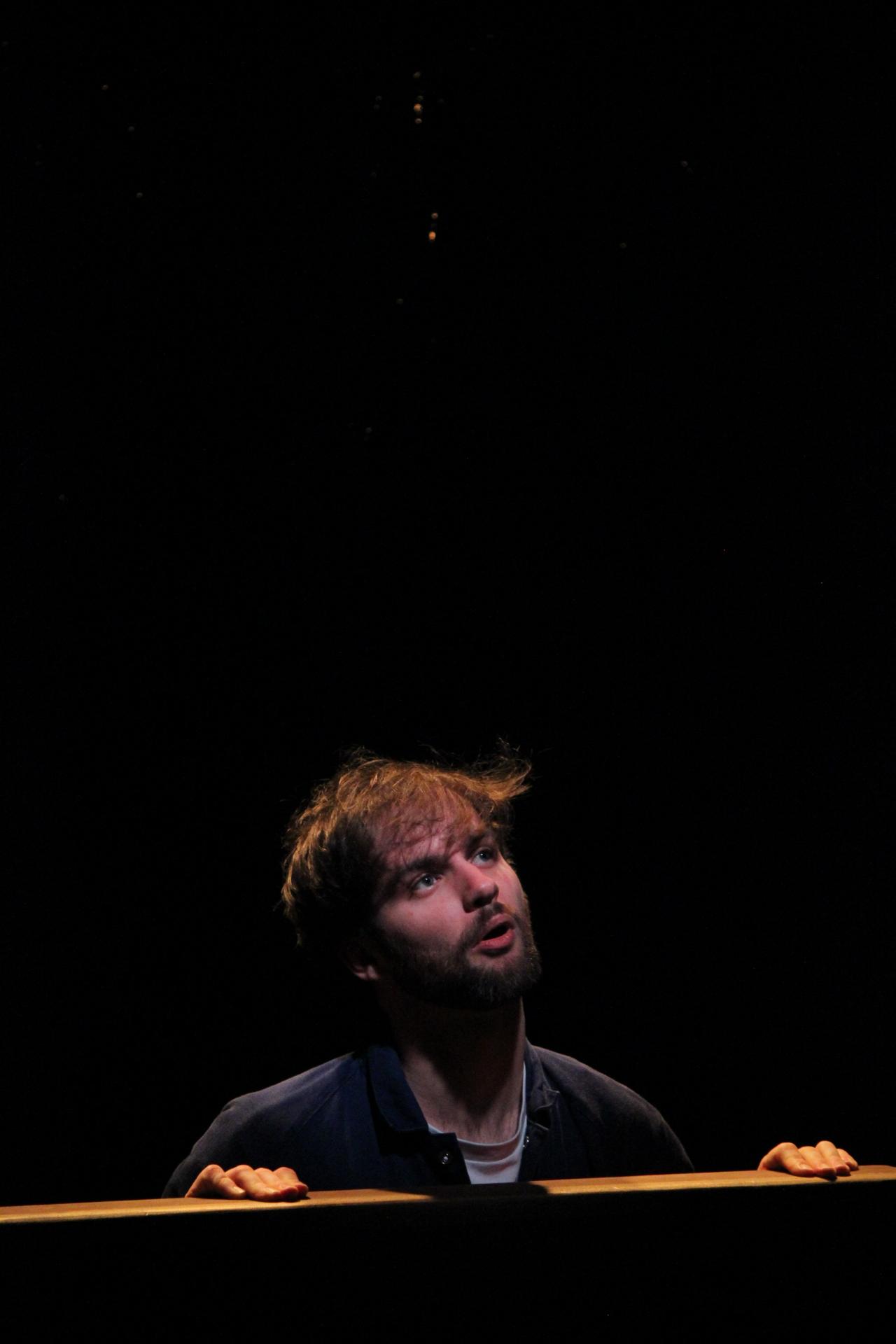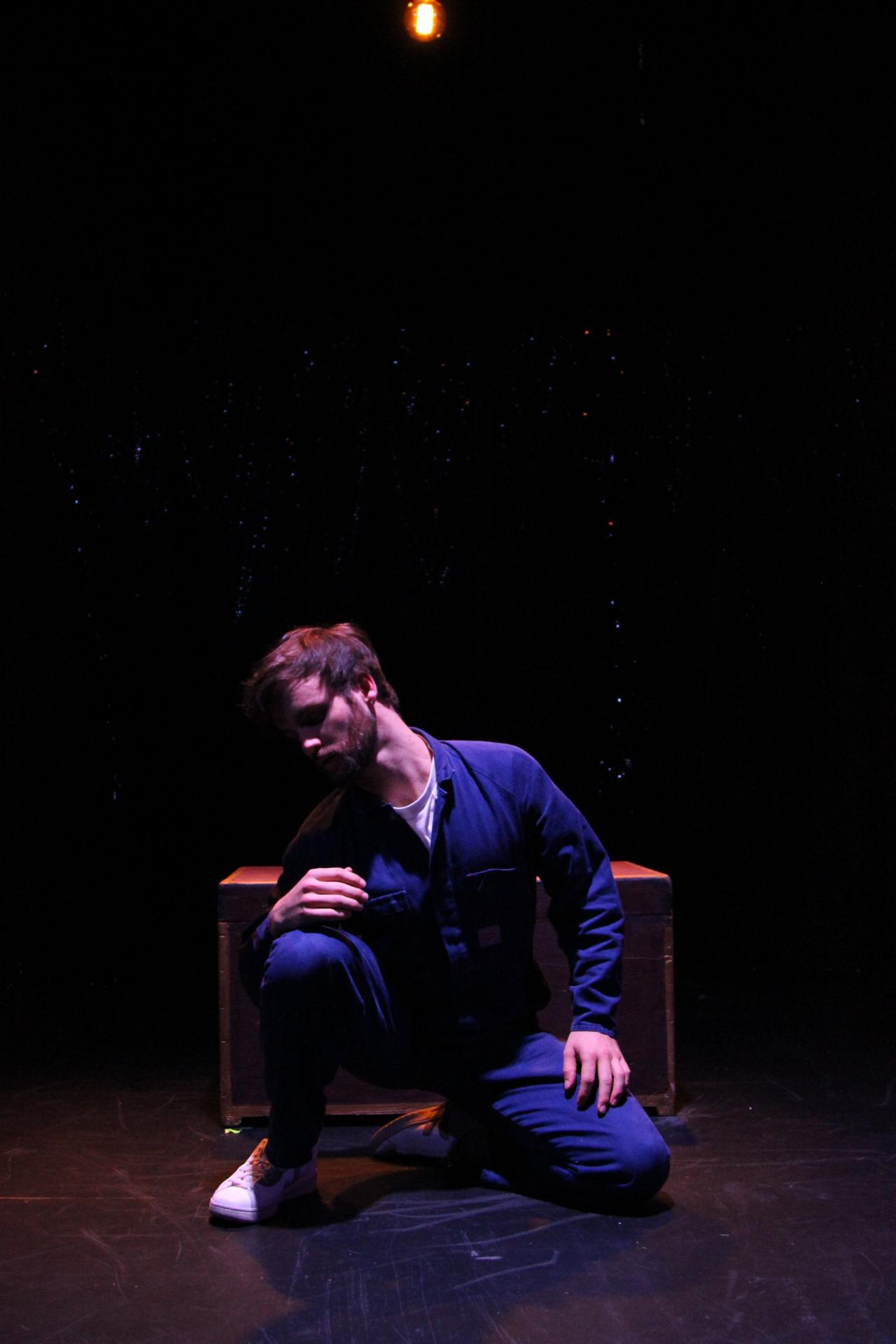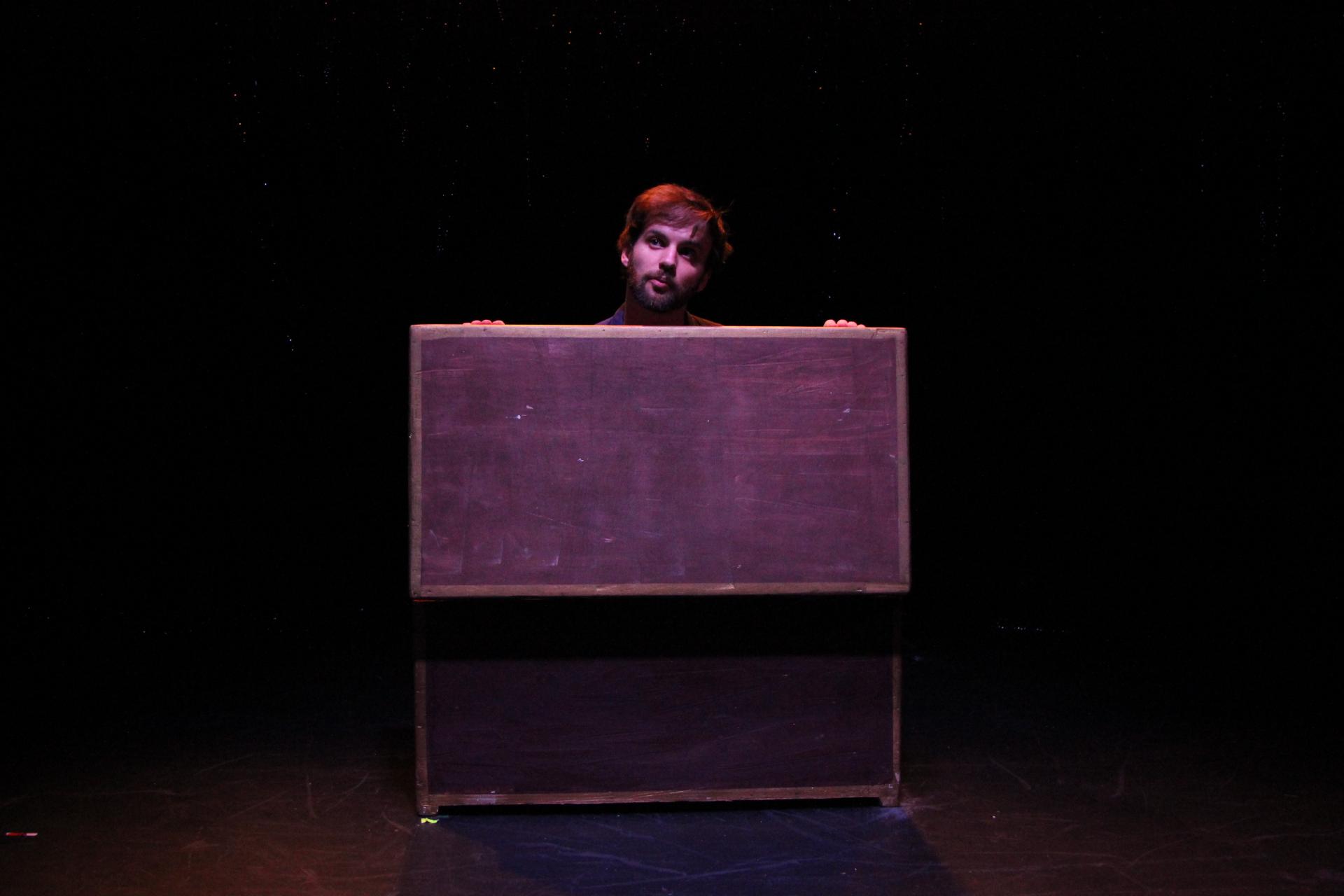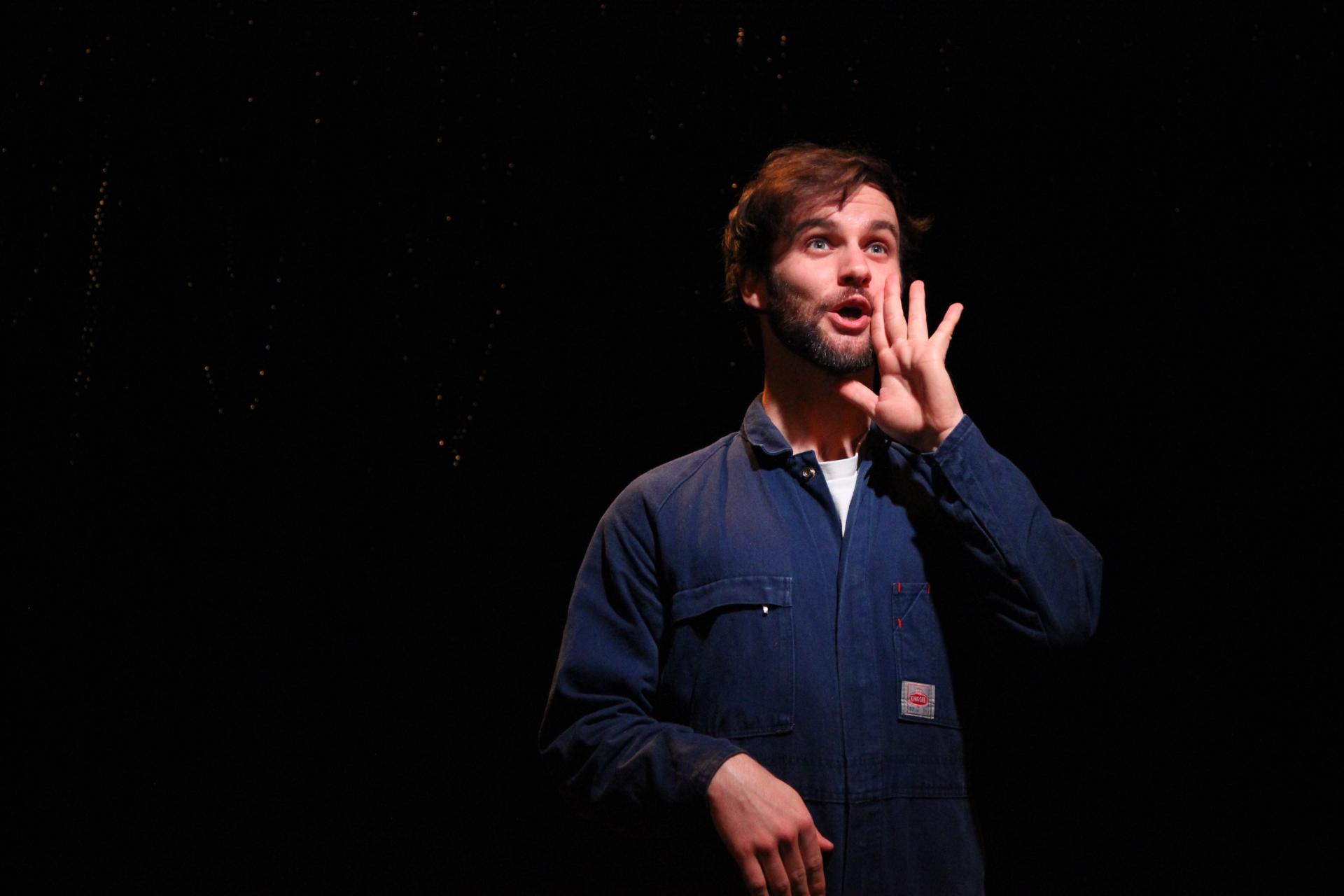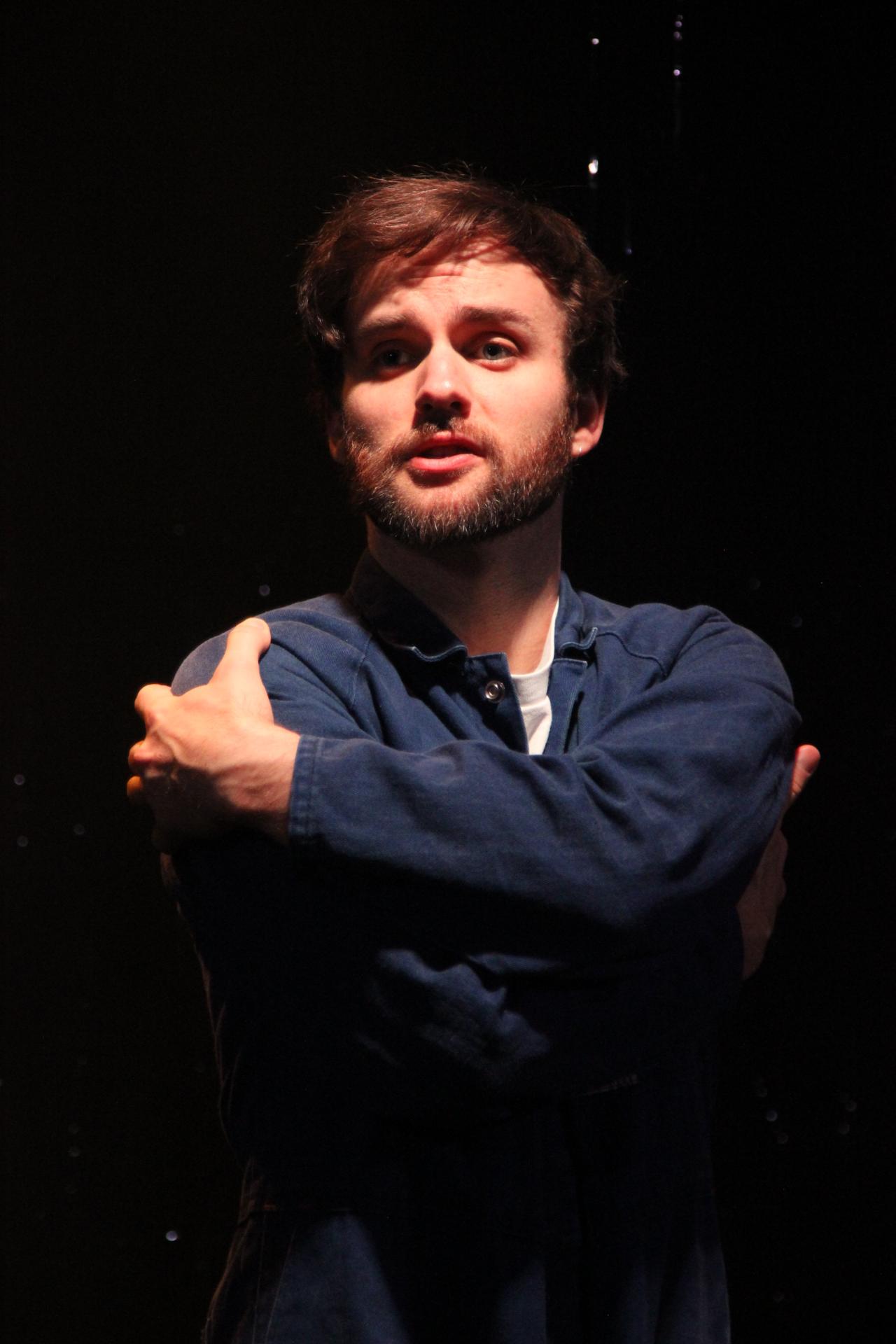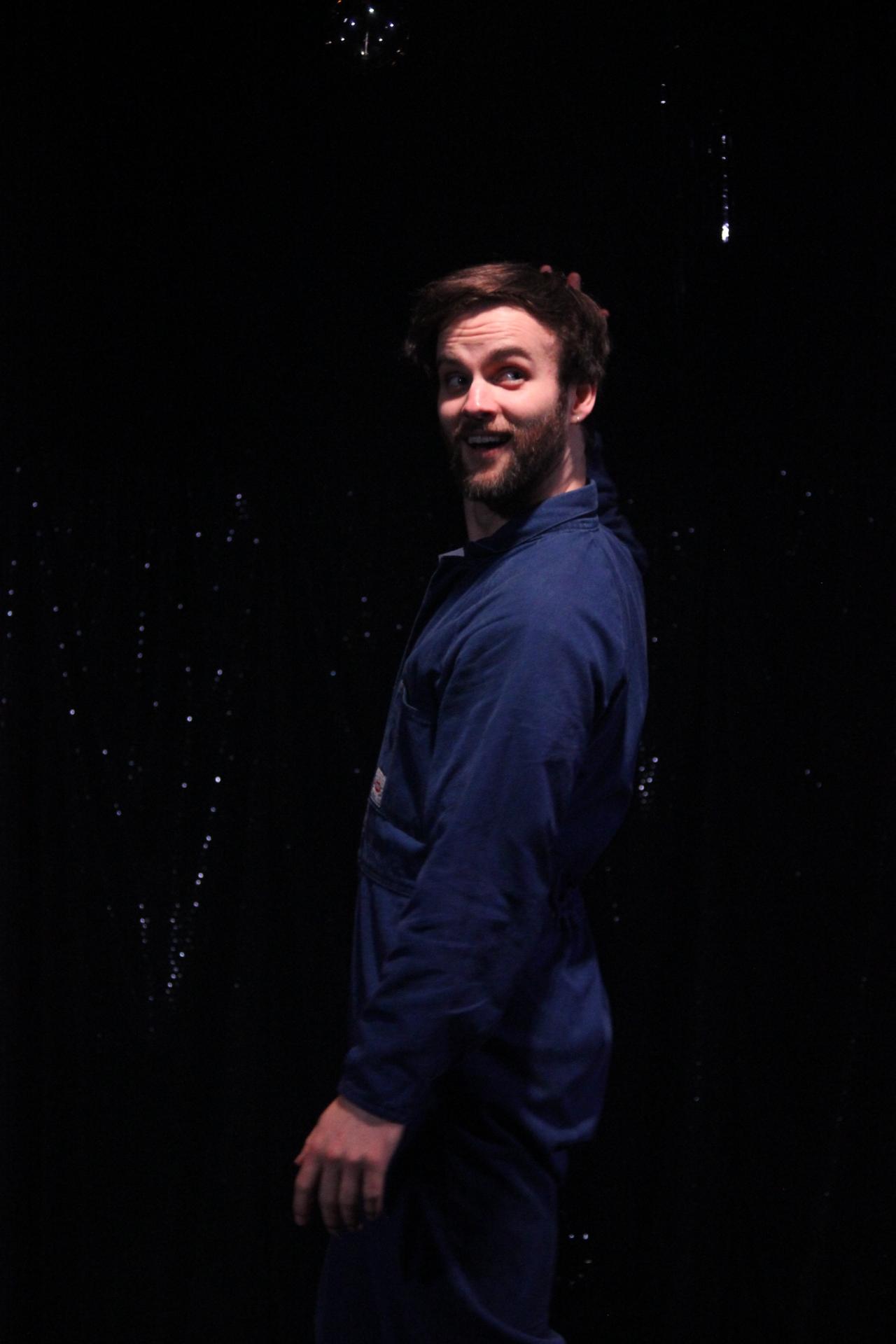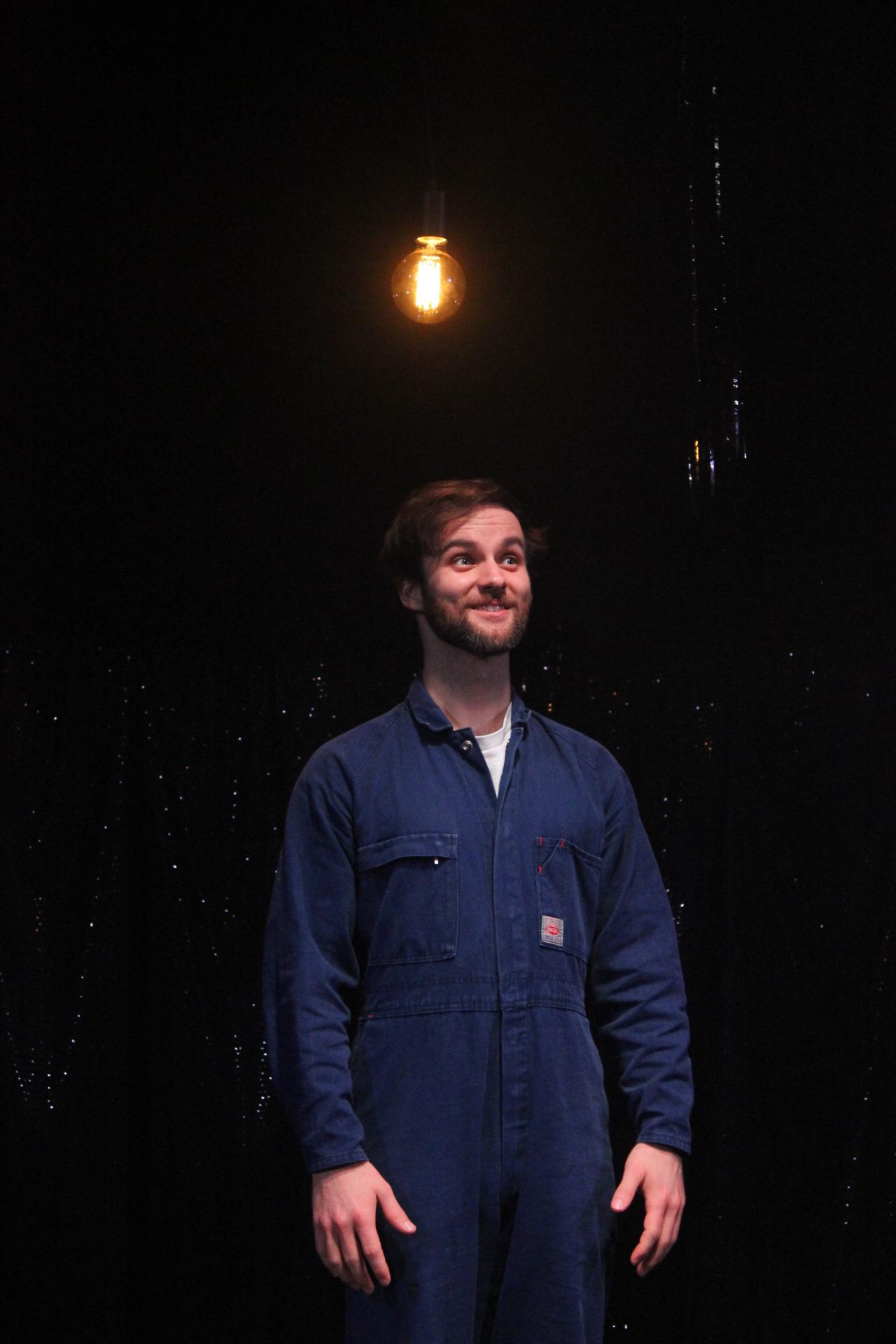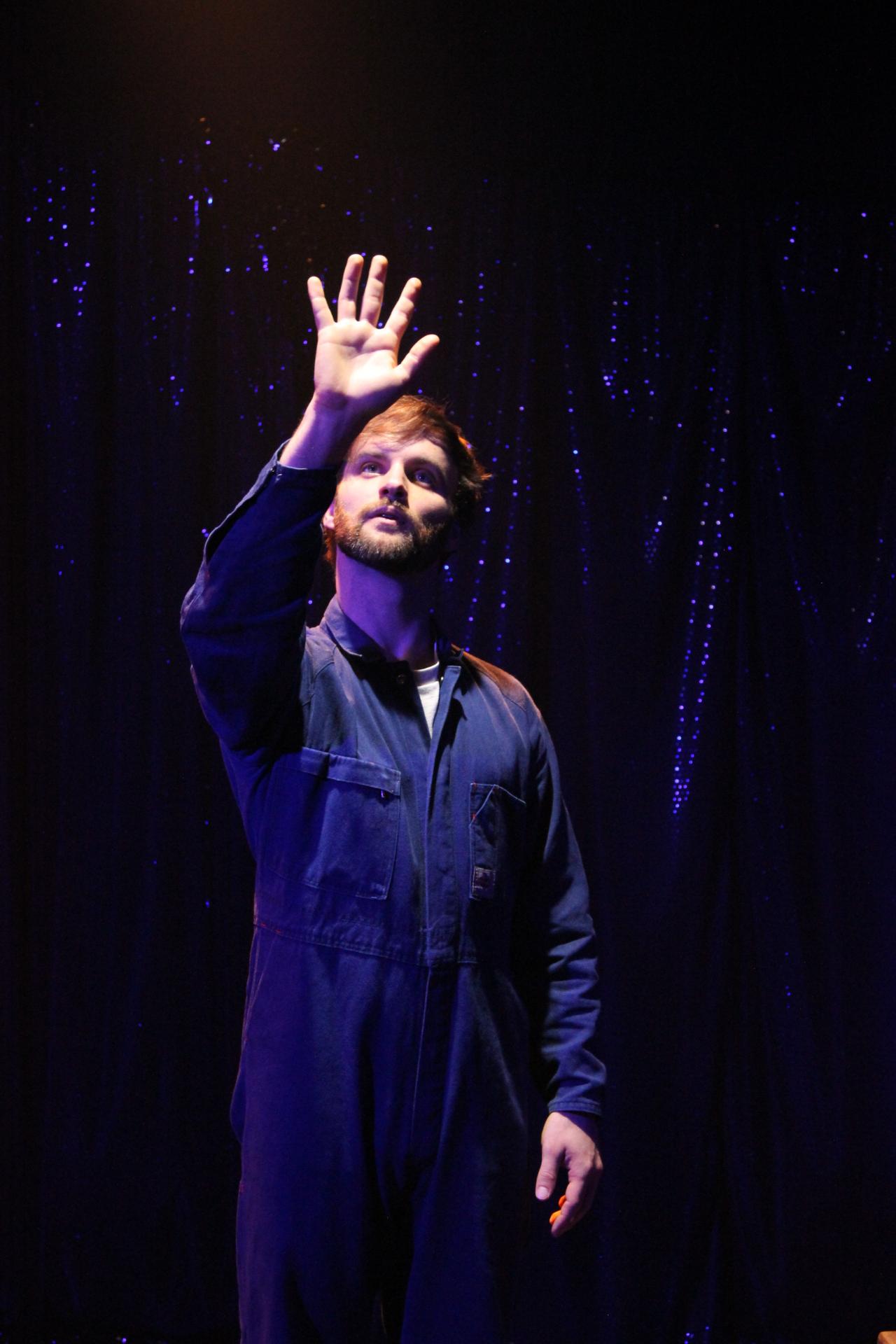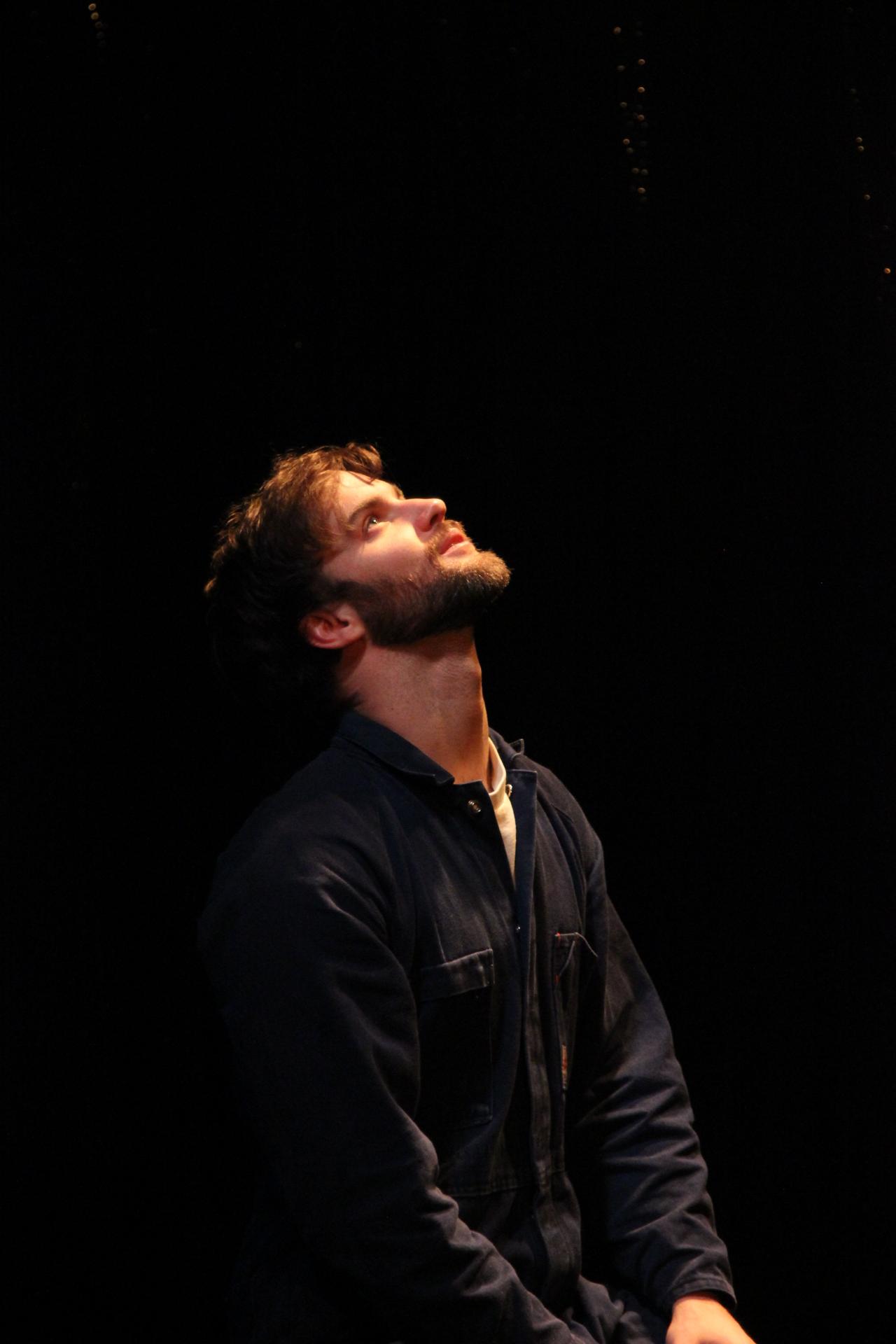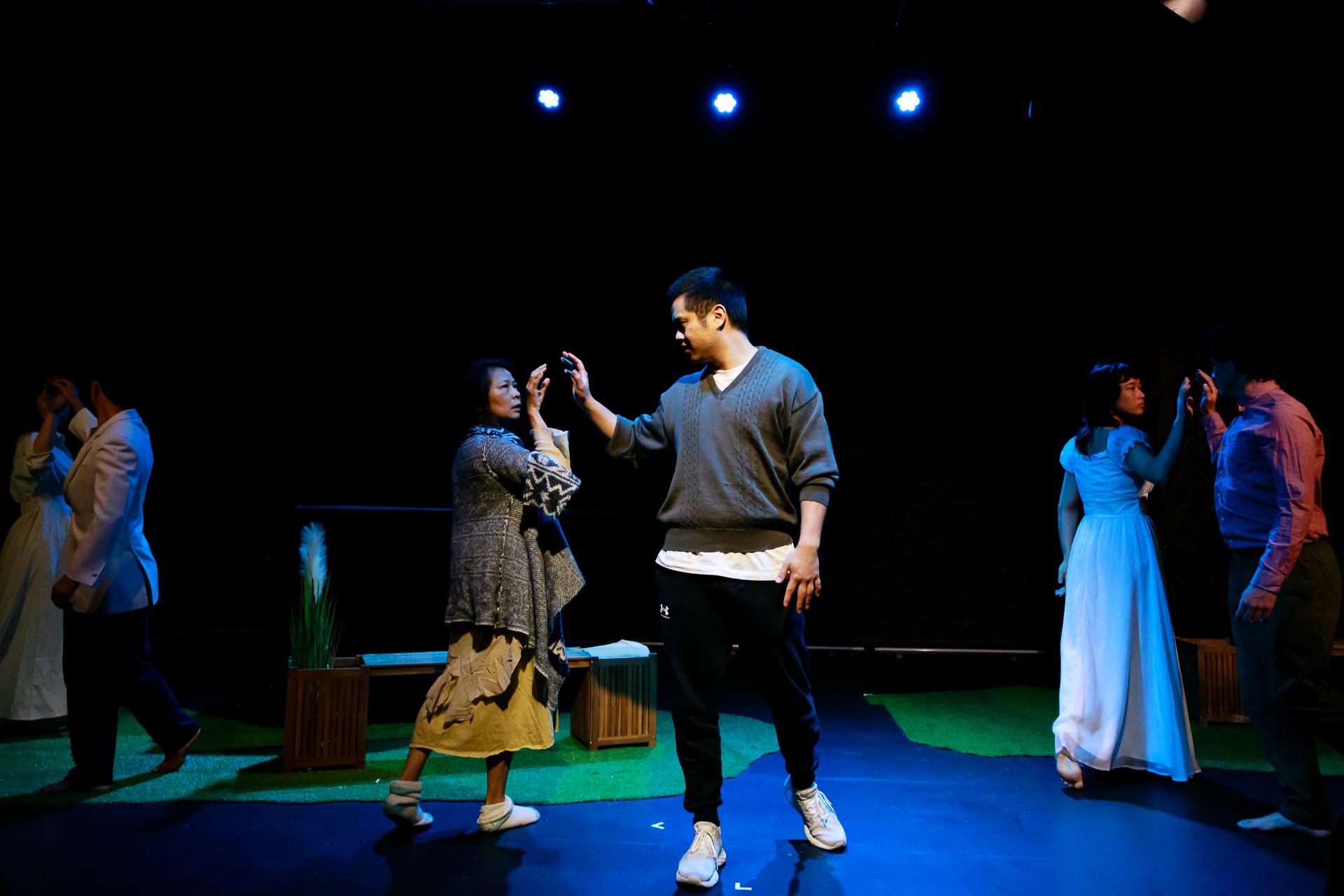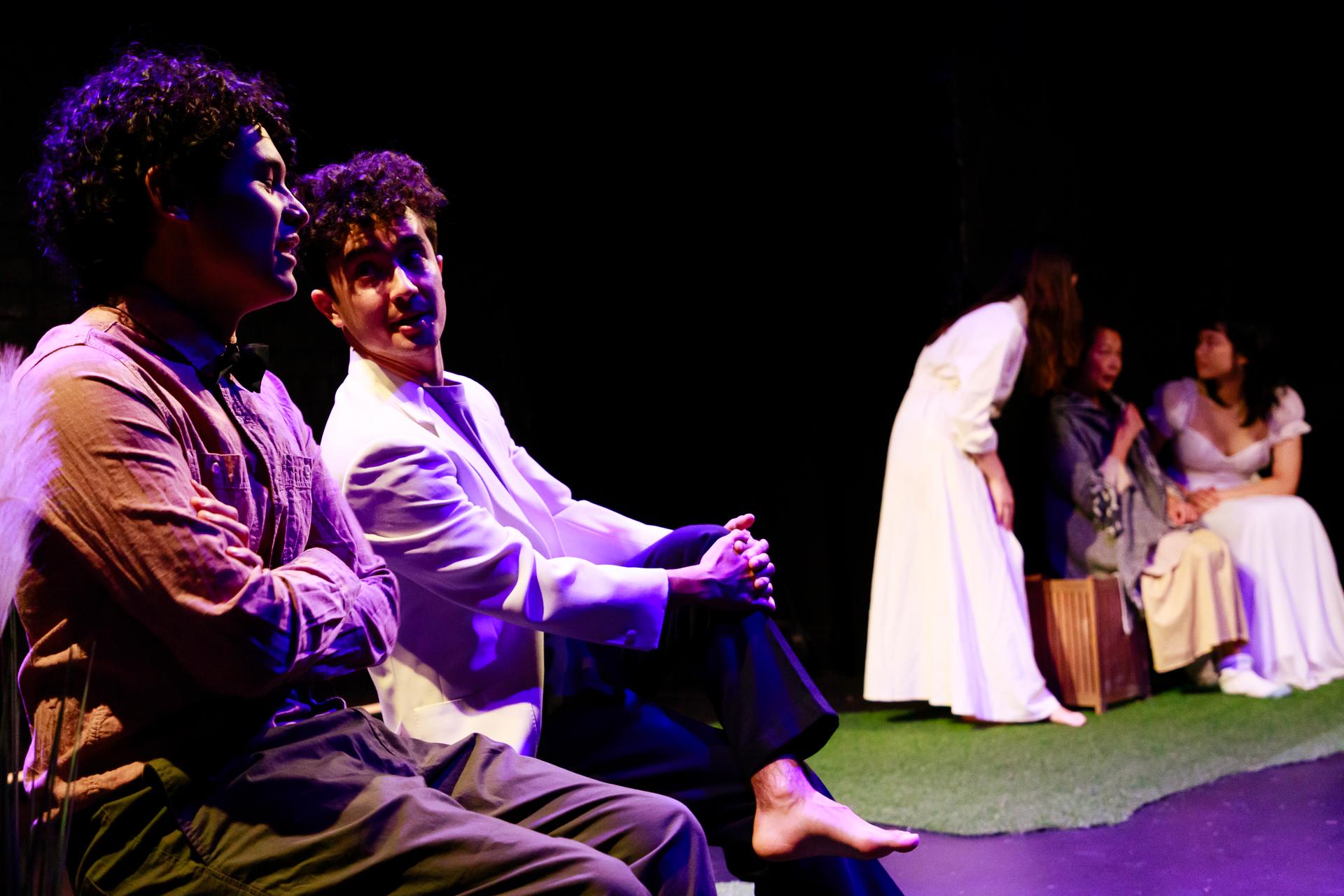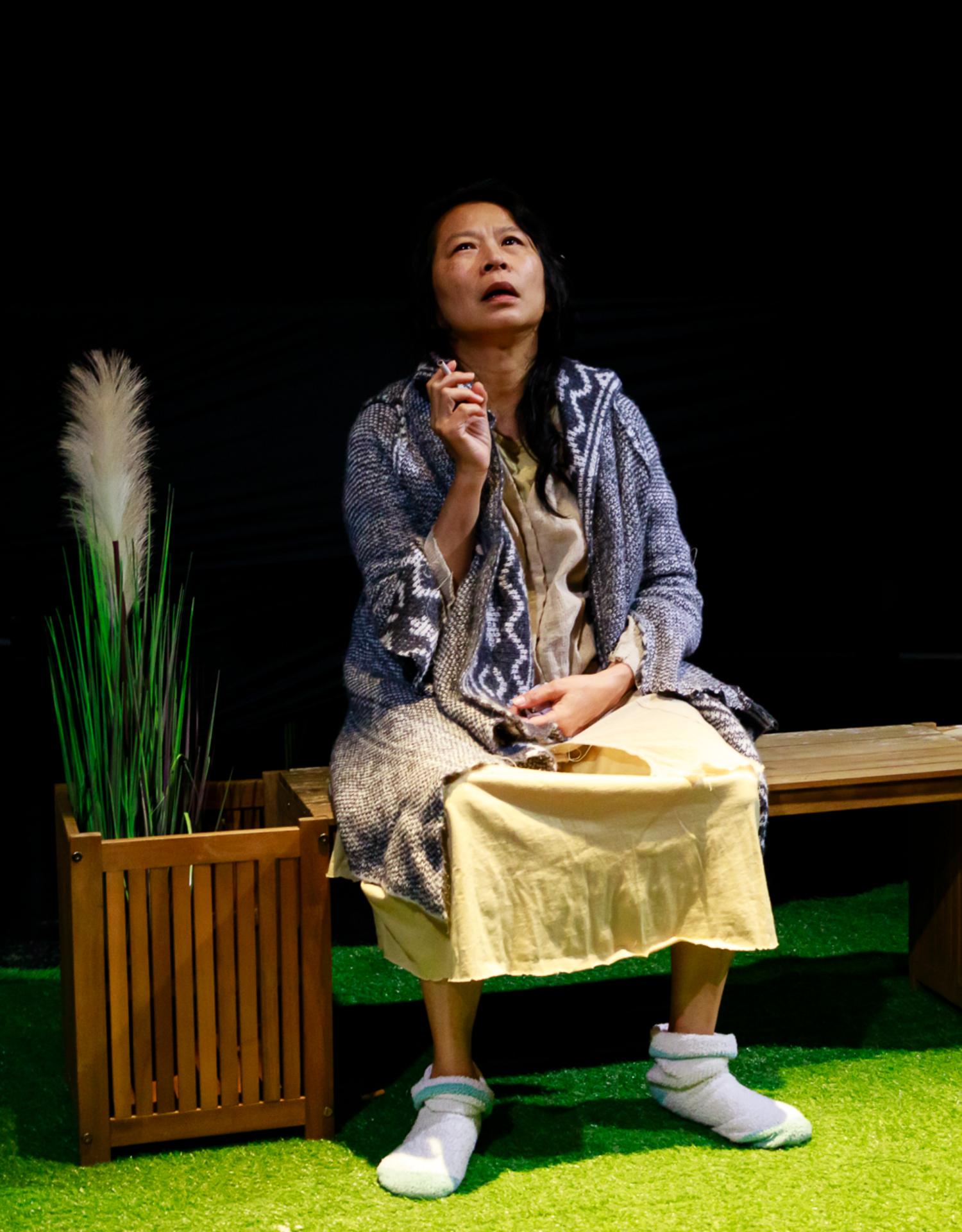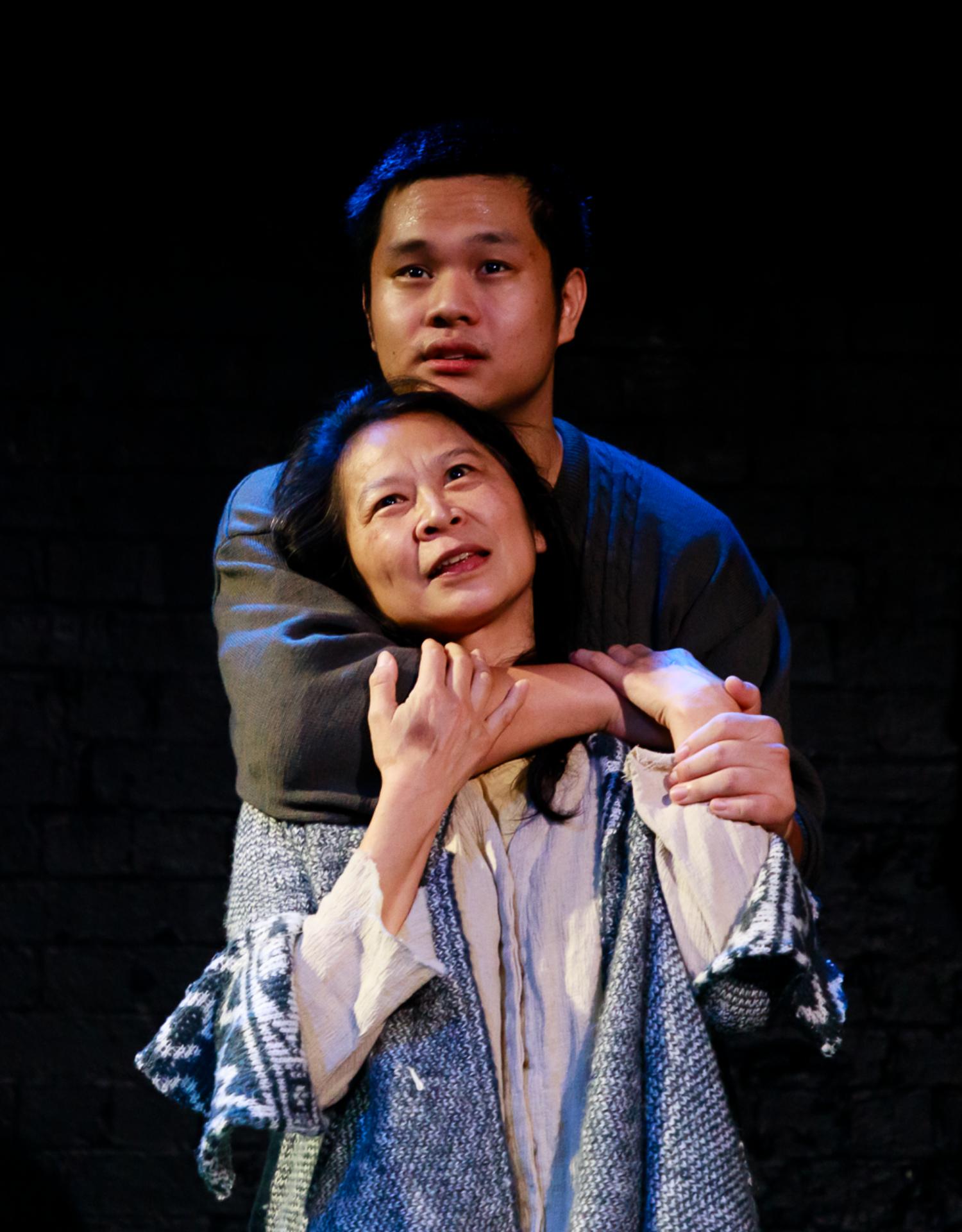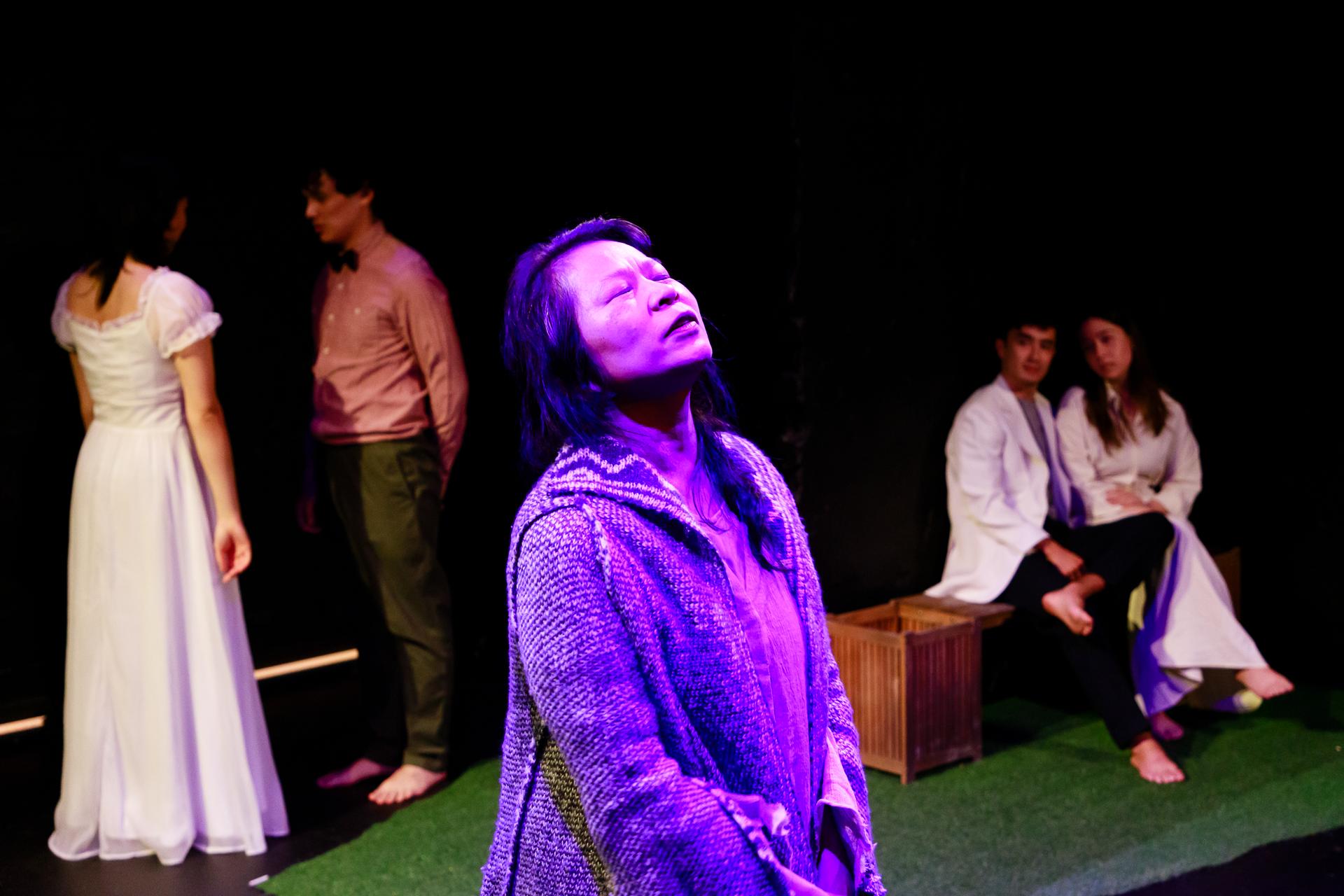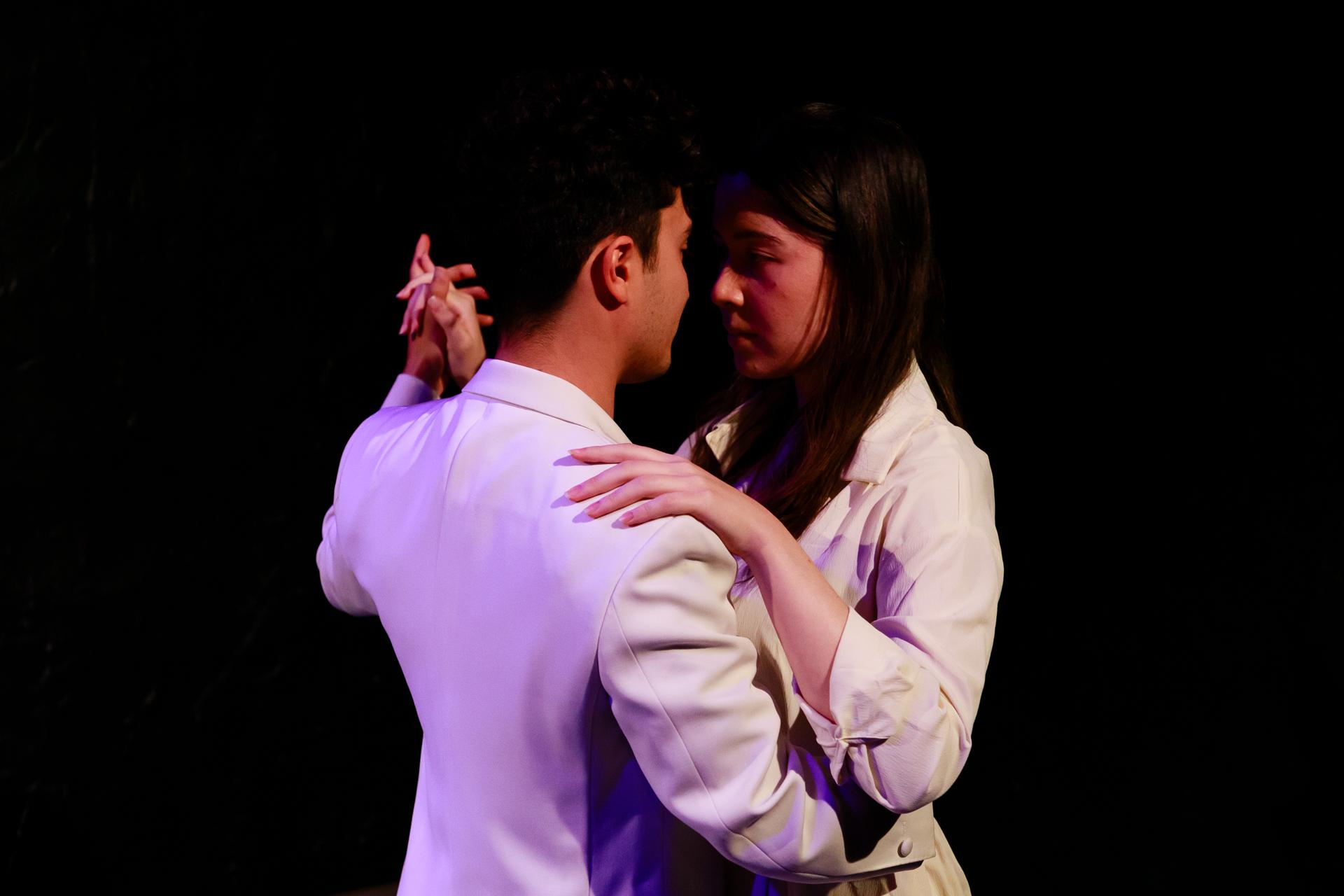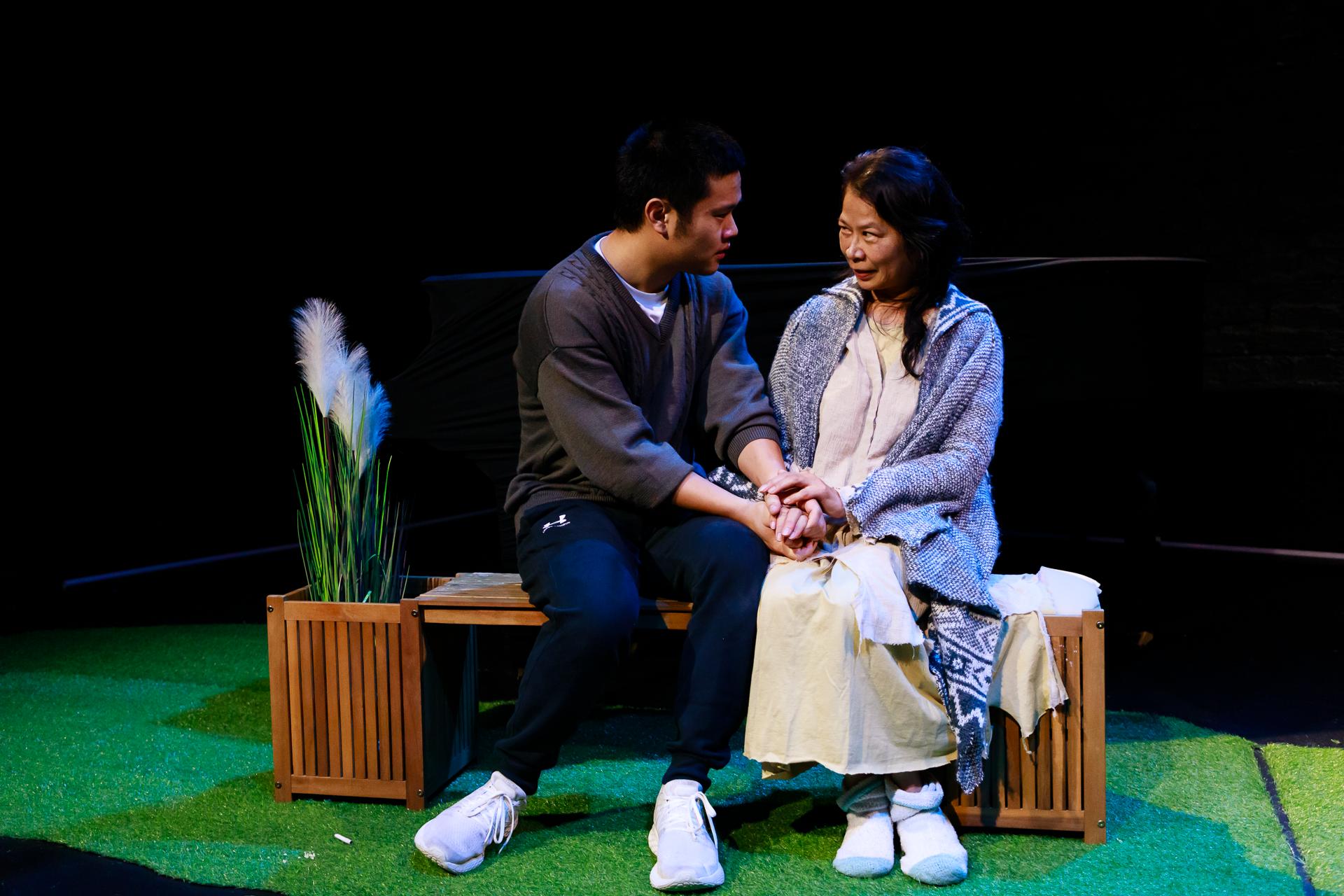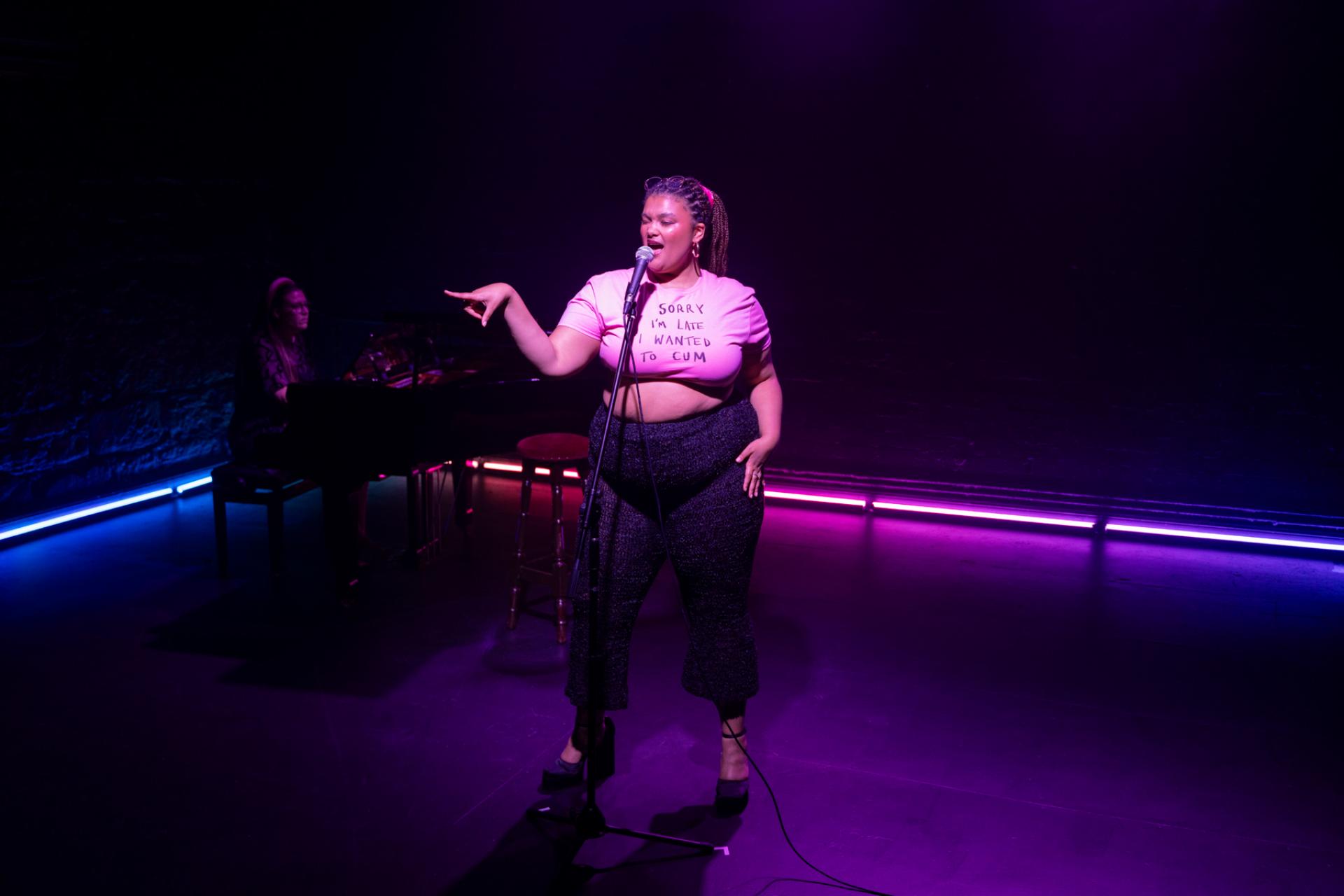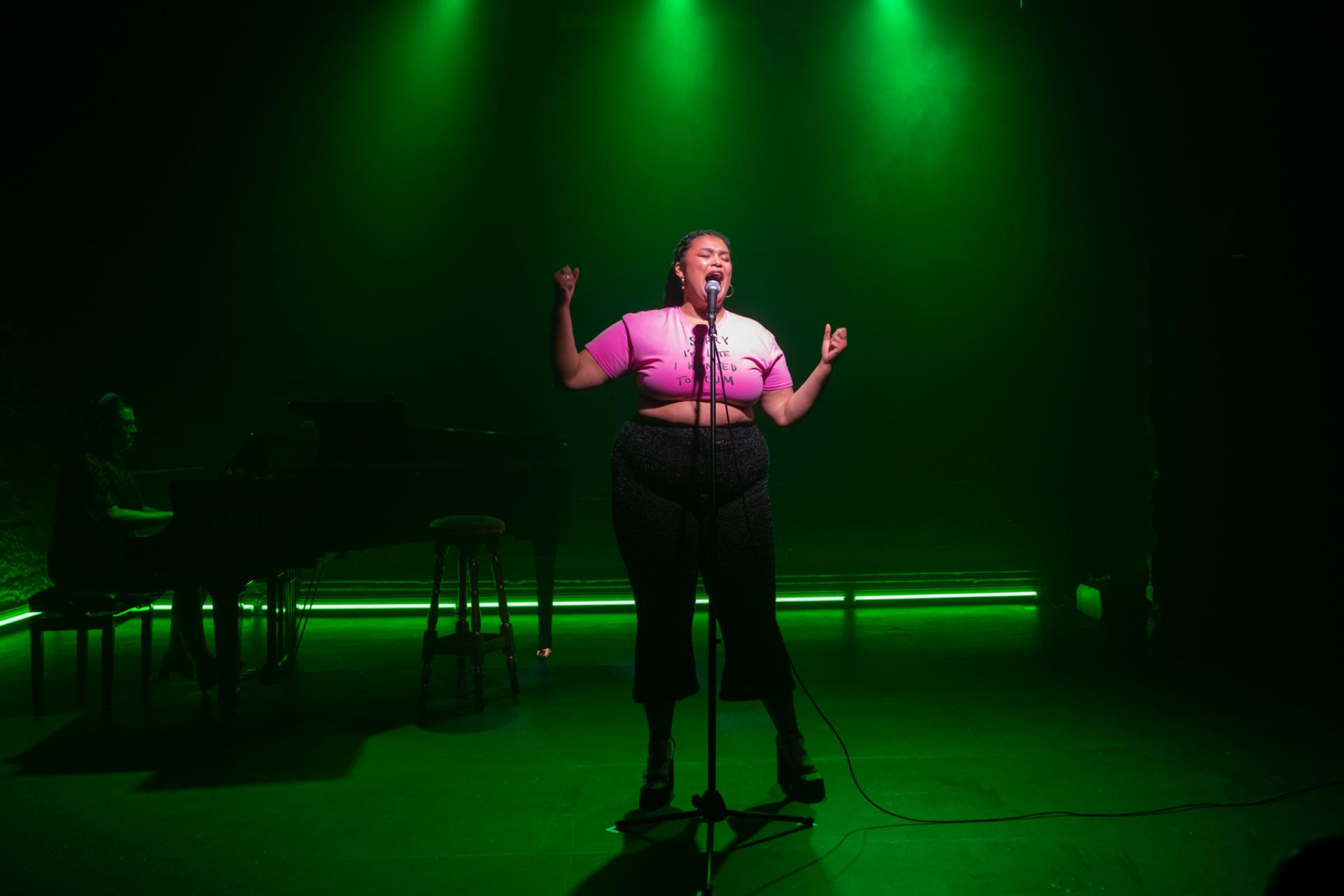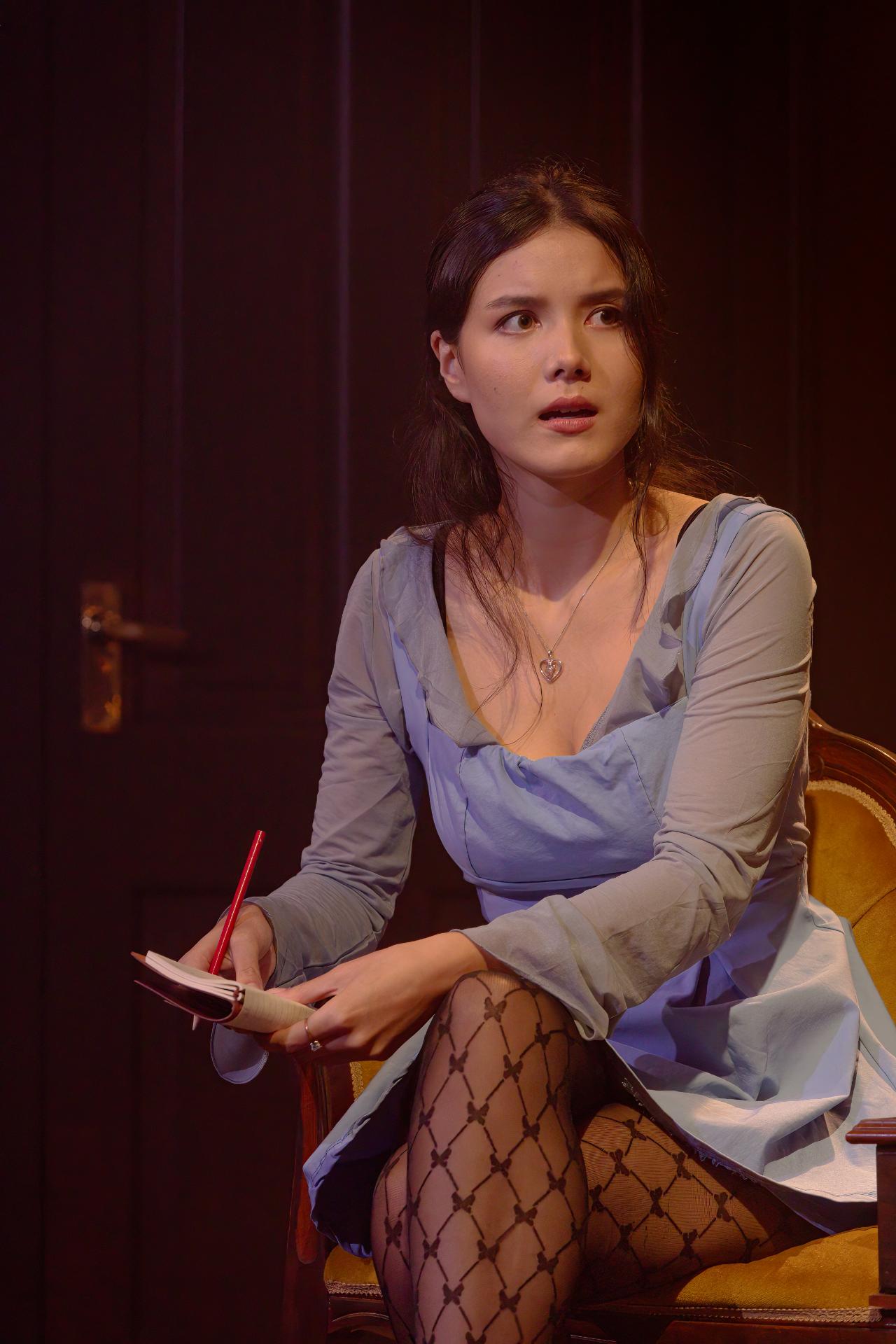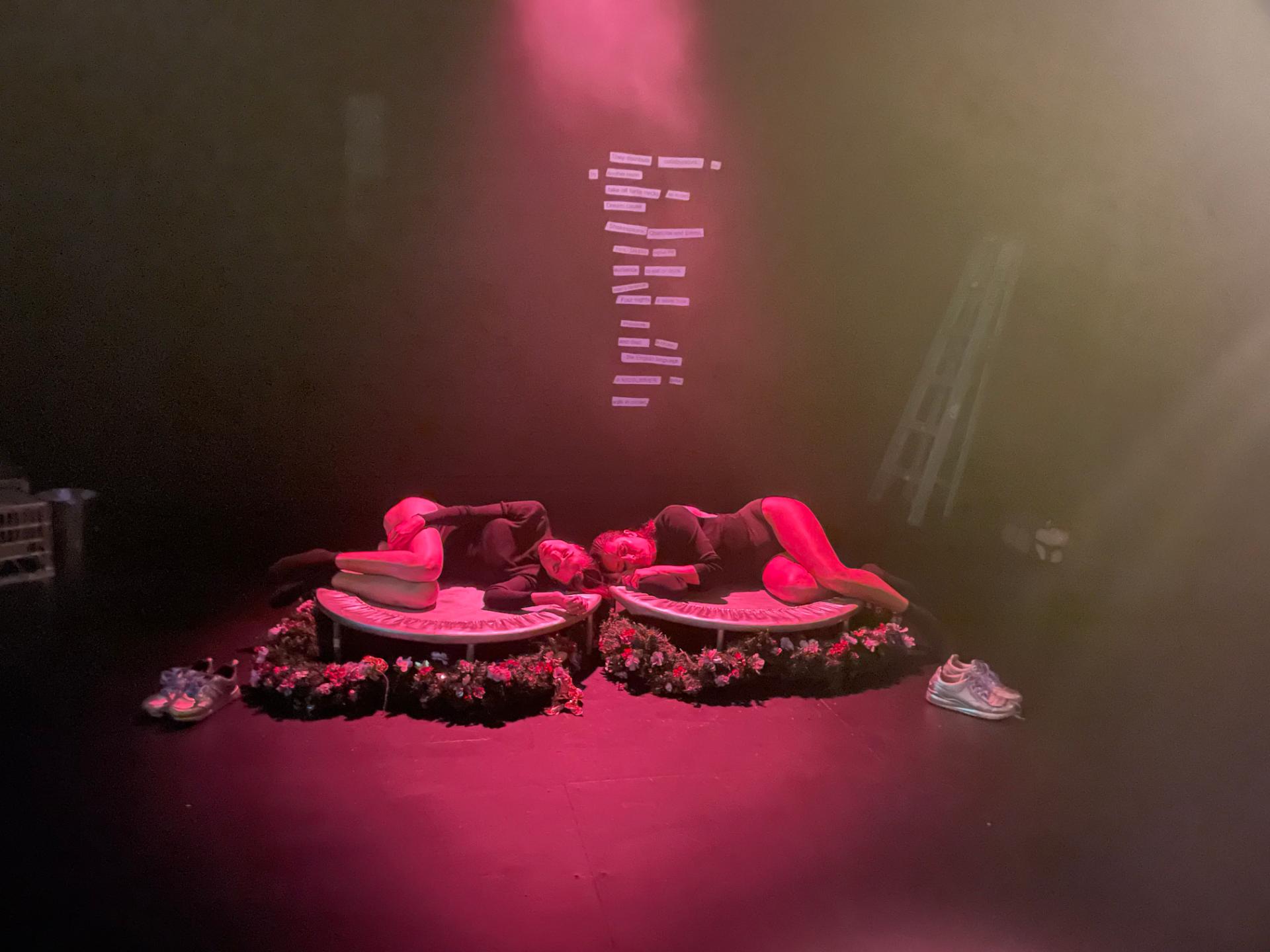










Venue: Old Fitzroy Theatre (Woolloomooloo NSW), May 3 – Jun 1, 2024
Playwright: Esther Vilar
Director: Damien Ryan
Cast: Sean O’Shea, Tom Wilson, Emma Wright
Images by Kate Williams
Theatre review
In Isolde & Tristan by Esther Vilar, the Irish princess Isolde is being cargoed off to England, like an item of merchandise, where she is to marry the king of Cornwall. In charge of dispatch, is the handsome Tristan, who had very recently beheaded Isolde’s betrothed, by the king’s order, which makes the journey exceedingly interesting.
The German title of Vilar’s play is Stundenplan einer Rache (or Timetable of a Revenge), which draws unambiguous attention to its revenge narrative, but under Damien Ryan’s direction, in a refreshing translation by Udo Borgert and Laura Ginters, we are made almost to forget the heroine’s vendetta, as she negotiates her very survival, on board a vessel to an anguishing future. The complexities of Isolde’s plans are diluted in the drama, and the show consequently loses tension at some points, but it is nonetheless a charming work memorable for its flirtations with controversy.
A delicate balance between humour and a sense of danger, is struck by a very competent cast comprising Sean O’Shea, Tom Wilson and Emma Wright, who demonstrate admirable ingenuity and instinct, in their presentation of Vilar’s contentious ideas. Live singing by Octavia Barron Martin, accompanied by Justin Leong on piano, features extracts from Wagner’s Tristan und Isolde to add an extravagance to the experience.
Sound design by Sorie Bangura makes certain our awareness around the characters being at choppy seas. A set by Tom Bannerman delivers alluring, if slightly unrefined, shapes to help us perceive the nautical surrounds, with lights by Sophie Pekbilimli ensuring we are conscious of time’s movement, from one scene to another. The overall visual quality of Isolde & Tristan can be improved, but costumes by Bernadette Ryan are a cut above the rest, with the princess’ attractive and extensive wardrobe proving especially noteworthy.
Isolde’s story seems so much to be about who she belongs to, but even though she has no real autonomy, there is definitely no shortage of agency in how she operates. Vilar seems to celebrate in her writing, the heroine’s capacity at inflicting harm upon her adversaries, even if it comes at an extremely high cost. This is about a woman trying to beat men at their own game. Much as we often have to play by their rules, we know that it is not the gender of winners that matters, but the nature of the game itself. We need to arrive at a place where we can decide on our own circumstances, and never to be possessed by anybody else.
